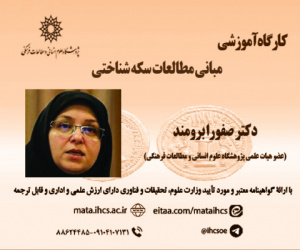پیش نگری تغییرات مقدار بارش فرین با دوره بازگشت های مختلف در ایران بر اساس رویکرد همادی ده مدل CMIP6 در آینده نزدیک (مقاله علمی وزارت علوم)
درجه علمی: نشریه علمی (وزارت علوم)
آرشیو
چکیده
در پژوهش حاضر تغییرات مقدار بارش فرین با دوره بازگشت های مختلف در دوره 2050-2026 با ترکیب وزنی 10 مدل CMIP6 در سناریوهای مختلف مطالعه شد. طبق رتبه بندی مکانی و زمانی ظرفیت های شبیه سازی تاریخی 10 مدل CMIP6 در ایران، وزن های مربوط به هر یک از مدل ها به دست آمد. سپس با استفاده از روش وزن دهی مبتنی بر رتبه، پیش نگری مقدار بارش فرین در منطقه موردمطالعه انجام شد. در ادامه بارش های فرین در بهترین توزیع آﻣﺎری ﻣﻨﻄﺒﻖ ﺑﺮ داده ﻫﺎ برای هر یک از ایستگاه ها که در 84 درصد ایستگاه ها توزیع log-Pearson type3 با آزمون کای اسکوئر انتخاب گردید. در دوره تاریخی (1990-2014) و آینده در هر سه سناریو و دوره بازگشت های مختلف محاسبه شد. مقایسه پیش نگری بارش های فرین با دوره تاریخی نشان داد که درصد تغییرات مقدار بارش فرین پیش نگری شده در سناریو SSP2-4.5، نسبت به دو سناریو دیگر بیشتر است. همچنین به سمت دوره بازگشت های طولانی تر درصد افزایش مقدار بارش پیش نگری شده افزایش و منطقه رخداد آن نیز گسترش می یابد. بیشترین افزایش مقدار بارش فرین پیش نگری شده (بیشتر از 25 درصد) در سناریو خوش بینانه در ایستگاه های گرگان، بابلسر، بجنورد، اراک، اصفهان و زاهدان، در سناریو میانه در ایستگاه های گرگان، سنندج، همدان، اراک، کاشان، اصفهان، شیراز، فسا، میناب، بوشهر، بندرعباس، بندرلنگه، ابوموسی و در سناریو بدبینانه در ایستگاه های بجنورد، بیرجند، اراک، کاشان و سمنان مشاهده شد. افزایش مقدار بارش فرین بیش از 25 درصد در ایستگاه اراک در هر سه سناریو (حدود 70 درصد در سناریوهای SSP1-2.6 و SSP2-4.5، حدود 50 درصد در سناریوی SSP5-8.5 در دوره بازگشت 200 ساله) مشاهده شد.Projection changes of extreme precipitation with different return periods in Iran based on the ensemble approach of 10 CMIP6 models in the near future
In the current study, changes in the amount of extreme precipitation with different return periods for the period 2026–2050 were analyzed using the weighted combination of 10 CMIP6 models under different scenarios. The spatial and temporal ranking of the historical simulation performance of the 10 CMIP6 models in Iran was used to determine the weights for each model. Subsequently, a rank-based weighting method was employed to project extreme precipitation levels in the study area.For extreme precipitation analysis, the best statistical distribution was selected for each station based on historical data. In 84% of the stations, the Log-Pearson Type 3 distribution was identified as the best fit using the chi-square test for both the historical period (1990–2014) and future scenarios.A comparison between the results of extreme precipitation for the historical and future periods revealed that the percentage of change in projected extreme precipitation was notably higher under the SSP2-4.5 scenario compared to the other two scenarios. Moreover, with longer return periods, the percentage increase in extreme precipitation was greater, and the spatial extent of its occurrence also expanded. The greatest increases in projected extreme precipitation, exceeding 25%, were observed in the SSP1-2.6 scenario in Gorgan, Babolsar, Bojnord, Arak, Isfahan, and Zahedan stations. In the SSP2-4.5 scenario, the largest increases were recorded in Gorgan, Sanandaj, Hamedan, Arak, Kashan, Isfahan, Shiraz, Fasa, Minab, Bushehr, Bandar Abbas, Bandar Lengeh, and Abu Musi stations. Under the SSP5-8.5 scenario, the greatest increases occurred in Bojnord, Birjand, Arak, Kashan, and Semnan stations.A significant increase in extreme precipitation was consistently observed in Arak station across all three scenarios. For the 200-year return period, extreme precipitation at Arak station increased by approximately 70% under the SSP1-2.6 and SSP2-4.5 scenarios, and by about 50% under the SSP5-8.5 scenario.







